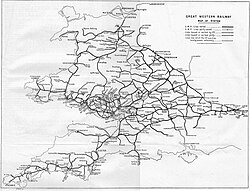GWR diesel shunters
This article needs additional citations for verification. (September 2014) |
The Great Western Railway purchased two diesel shunters, and ordered a further seven immediately prior to Nationalisation, which were delivered to British Rail in 1948–49. The two shunters used by the GWR were numbered 1 and 2, while a series commencing at 501 was planned for the new locomotives ordered in the 1940s. British Rail renumbered both its inherited and new locomotives in a series commencing from 15100.
1
This locomotive was built by Fowler in 1933 and was used at Swindon Works. It was an 0-4-0 diesel mechanical shunter with a 70 hp (52 kW) engine, 3 ft (0.914 m) diameter wheels and a wheelbase of 4 ft 6 in (1.37 m). It was very similar to the London, Midland and Scottish Railway's (LMS) departmental locomotive number 2, which was built a couple of years later. It was withdrawn in 1940 and sold to the Ministry of Supply.[1][2]
2 / 15100
This locomotive was built by Hawthorn Leslie in 1936 and allocated to Swindon. It was a 0-6-0 diesel electric shunter, very similar to the LMS 7069 class (later British Rail Class D3/6), and with a close family resemblance to the Southern Railway Maunsell 350 hp DMS (SR 1 - SR3). It was renumbered 15100 by British Rail in 1948, withdrawn in 1965 and scrapped in early 1966.[1]
501 / 15107
Brush/Petter 360 bhp[1]
502-507 / 15101-15106
English Electric 350 bhp[1]
See also
References
- ^ a b c d Whitehurst 1973, p. 76.
- ^ Whitehurst 1973, p. 78.
- Whitehurst, Brian (1973). Great Western Engines, Names, Numbers, Types and Classes (1940 to Preservation). Oxford, UK: Oxford Publishing Company. ISBN 978-0-9028-8821-0. OCLC 815661.
